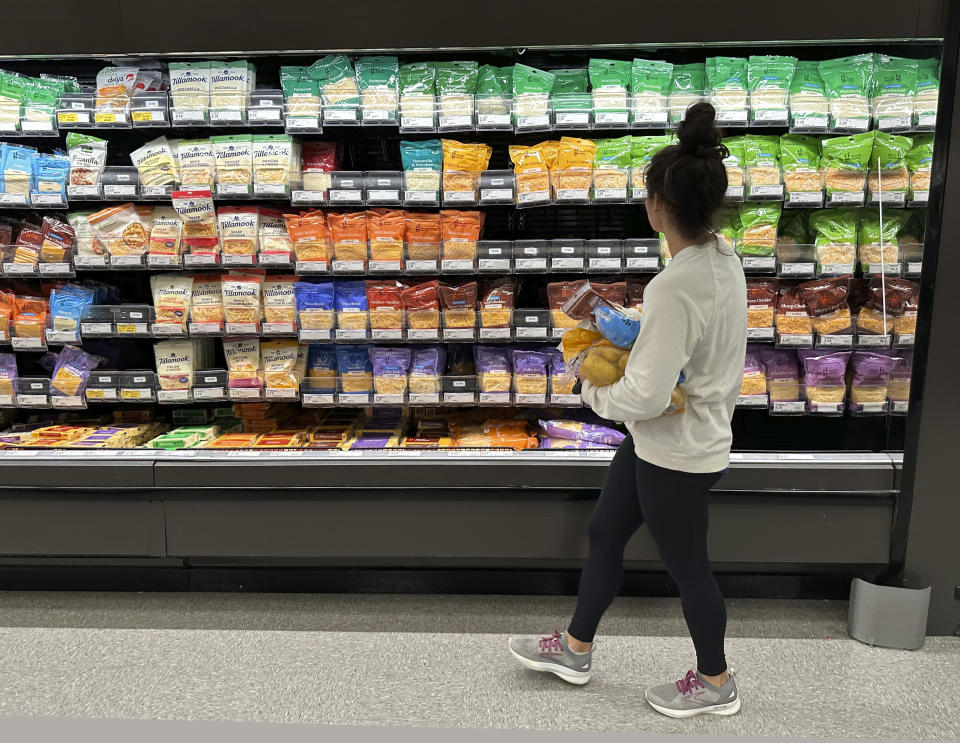Inflation in line with expectations in July as investors eye rate cuts
A closely watched report on US inflation showed that consumer price increases came in line with estimates during the month of July, according to the latest data from the Bureau of Labor Statistics released Wednesday morning.
The Consumer Price Index (CPI) rose 0.2% over the previous month, an uptick from June’s 0.1% decline amid a pickup in energy prices. The monthly increase in prices was in line with economist expectations.
The index increased 2.9% over the prior year in July, which was a slight deceleration compared to June’s 3% annual gain in prices and also ahead of economist expectations of a 3% annual increase.
The break below 3% is the lowest annual reading since spring 2021.
On a “core” basis, which strips out the more volatile costs of food and gas, prices in July climbed 0.2% over the prior month and 3.2% over last year — matching economist expectations. Core prices rose 0.1% month over month and 3.3% on an annual basis in June.
Markets edged higher on the heels of the report. The 10-year Treasury yield (^TNX) traded around 3.85%, largely unchanged.
Inflation has remained above the Federal Reserve’s 2% target on an annual basis. But recent economic data, including a sell-off-inducing July jobs report, has helped fuel a narrative the central bank should cut rates sooner rather than later.
Notably, the Fed’s preferred inflation gauge, the so-called core PCE price index, showed inflation in June was unchanged from the prior month and marked the slowest annual increase for core PCE in more than three years.
Immediately following Wednesday’s inflation data, markets were pricing in a nearly 100% chance the Federal Reserve cuts interest rates by the end of its September meeting. However, the odds of a 50 basis point cut or a 25 basis point cut are now split roughly 40/60 after a 70/30 chance placed by traders last week, per the CME FedWatch Tool.
“I think this report is a green light for the Federal Reserve in September,” Nathan Sheets, global chief economist for Citi, told Yahoo Finance’s The Morning Brief.
He noted it would still be a close call on whether the central bank would implement a 25 basis point or 50 basis point cut, adding that Thursday’s retail sales report for July would be a key data point to watch.
Seema Shah, chief global strategist at Principal Asset Management, added, “Today’s CPI print removes any lingering inflation obstacles that may have been preventing the Fed from starting the rate cutting cycle in September. Yet, the number also suggests limited urgency for a 50 basis point cut.”
“With supercore inflation up from last month and a sustained deceleration in shelter inflation still elusive, a gradual reduction in policy rates may be all the Fed can provide at this time — and all that it needs to deliver.”
Sticky shelter, food prices
Notable call-outs from the inflation print include the shelter index, which rose 5.1% on an unadjusted, annual basis, a slight slowdown from June. The index rose 0.4% month over month after rising 0.2% in June.
Sticky shelter inflation has largely been blamed for higher core inflation readings, according to economists.
July’s print reversed previous cooling trends on a month over month basis with the index for rent and owners’ equivalent rent (OER) rising 0.5% and 0.4%, respectively, from June to July. Owners’ equivalent rent is the hypothetical rent a homeowner would pay for the same property.
The index for lodging away from home rose 0.2% in July after falling 2% percent in June.
Meanwhile, the energy index was unchanged in July after falling 2% the previous month as gas prices reversed recent declines. On a yearly basis, the index inched up 1.1%. Gas prices were unchanged from June to July after falling 3.8% the previous month.
The food index increased 2.2% in July over the last year, with food prices rising 0.2% month over month — proving to be a sticky category for inflation. The index for food at home rose 0.1% from June to July while food away from home increased 0.2%.
Other indexes with notable increases over the last year in July included motor vehicle insurance (+18.6%), medical care (+3.2%), personal care (+3.4%), and recreation (+1.4%)
The indexes for used cars and trucks, medical care, airline fares, and apparel were among those that decreased over the month, according to the BLS

Alexandra Canal is a Senior Reporter at Yahoo Finance. Follow her on X @allie_canal, LinkedIn, and email her at [email protected].
Click here for the latest stock market news and in-depth analysis, including events that move stocks
Read the latest financial and business news from Yahoo Finance








